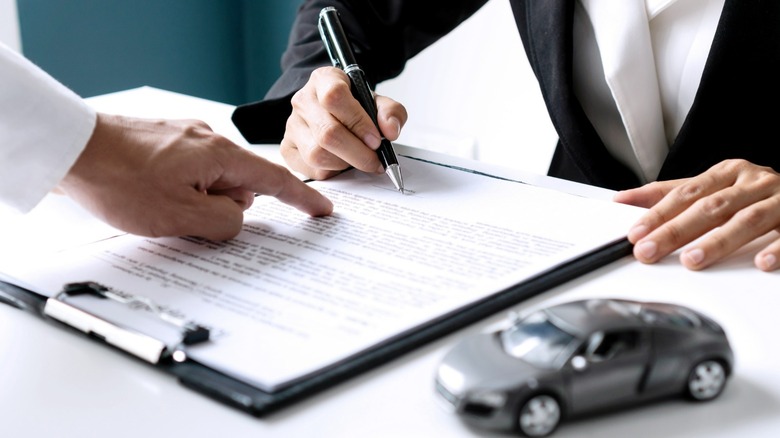Car Shoppers Are Facing A Finance Nightmare
Things aren't looking great for car shoppers, who will likely be paying a lot more than they should in both the new and used markets in the months ahead. People have been overpaying for their vehicles for quite some time now. In 2021, research showed that the average monthly car loan payment had already increased by 25% in a decade. It's a trend that seems to be progressing over the years, and car inventory shortages are only making things worse. The average new car transaction costs surged dramatically over the past year, with EV buyers paying over 15% more than last year, while customers opting for regular non-luxury cars have been paying about $1,000 more than retail prices.
Sure, lower vehicle supplies are struggling to keep up with consumer demand, but that's not the only factor pushing prices upwards. Given the Federal Reserve's hawkish stance on rising interest rates, economists fear rate hikes will reach even higher than anticipated by the end of the year, according to Reuters. So, how will that affect car shoppers, exactly? The inevitable side-effect of such rate hikes translates to higher car loan premiums, which affects most car buyers who are short on cold, hard cash.
Bad car deals ahead
Now, some new cars already come with significantly higher markup prices than others, and consumers pay more regardless believing that the situation won't get any better in the short term. According to automotive research firm Kelley Blue Book, that may very well be the case considering the Fed's projected interest rate hikes. New car prices are reportedly at a record high already, and rising interest rates will likely turn them into "luxury goods" soon.
On the other hand, wholesale prices of used cars have dropped by over 10%, with retail prices expected to follow. However, interest rate hikes could possibly negate those effects as well, leading to worse car deals than before even in the used market.
It doesn't help that credit flow is reportedly limited to "a smaller portion of the population" either. Even if diminishing consumer demand forces prices downwards, car shoppers will still have to contend with higher interest rates. This leaves shoppers with the dilemma of either buying now at higher prices while the interest rates are lower, or waiting for prices to drop later albeit at higher interest rates. Both options don't sound much better than the other, but for car shoppers, choices are becoming as scarce as the supply of new vehicles.

